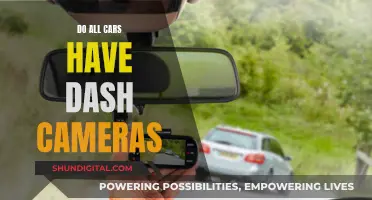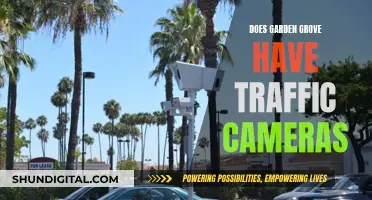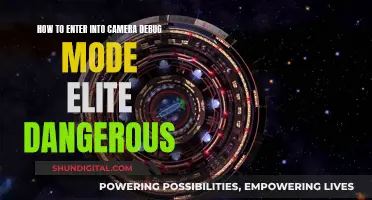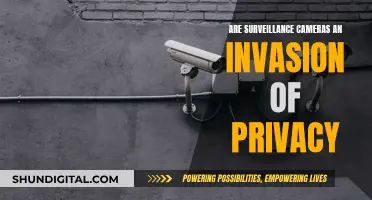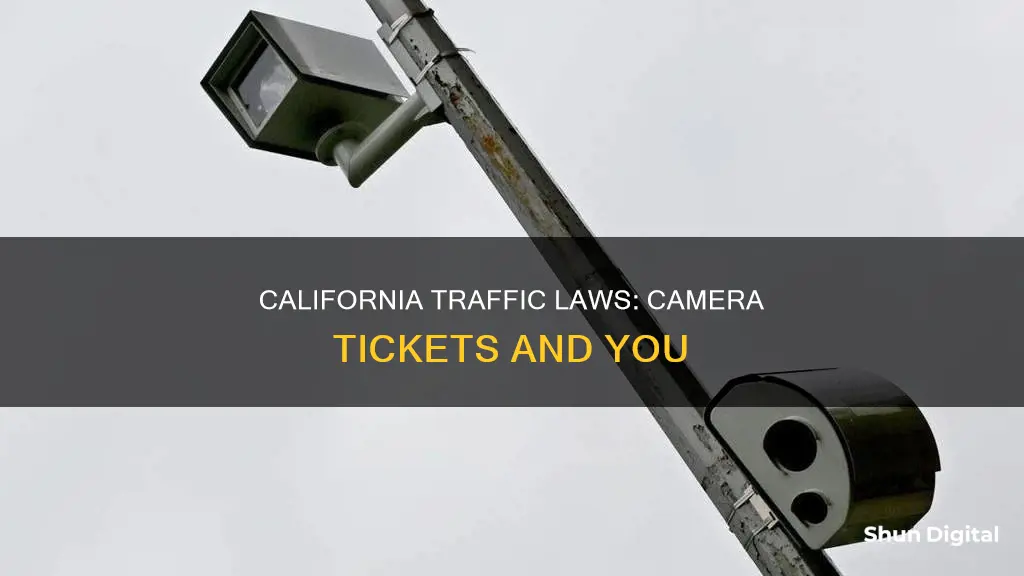
California has a problem with drivers running red lights, and in 2019, the state recorded almost 130 deadly crashes where at least one driver ran a red light. This amounts to more than 15% of the entire national total. To deter drivers from running red lights and reduce the number of deaths from these crashes, many Californian street intersections have been fitted with red light cameras.
These cameras are typically triggered by sensors and capture two photos—one of a car crossing the intersection during a red light, and another of the car in the middle of the intersection, which proves that the car entered the intersection on purpose. The second photo also contains the date, time, location, violation number, and car speed.
If you are caught running a red light by one of these cameras, you will receive a ticket in the mail. This will include the dollar amount that must be paid in fines, photo evidence, a copy of the citation, and information on how to challenge the ticket.
Red light camera tickets are legal in California under California Vehicle Code 21455.5, which covers Offenses Relating to Traffic Devices.
| Characteristics | Values |
|---|---|
| How are red light camera tickets triggered? | A ticket is triggered when a vehicle passes over a sensor in the road when the light is red. |
| Who is the ticket issued to? | The registered owner of the vehicle. |
| How is the ticket delivered? | By mail. |
| What does the ticket include? | The dollar amount of fines, photo evidence, a copy of the citation, and information on how to challenge the ticket. |
| How long does it take to receive a ticket? | Up to 15 days, but typically within 2 weeks. |
| What are the consequences of a red light camera ticket? | Fines, points on your driving record, higher insurance rates, and possible license suspension. |
| How much is a red light camera ticket? | Base fines range from $35 to $100, but with additional fees and surcharges, the total cost can be anywhere from $100 to $500. |
| Are red light cameras legal? | Yes, under California Vehicle Code 21455.5. |
| Are there requirements for their use? | Warning signs must be posted within 200 feet of the intersection, and yellow lights must last for a minimum of 3 seconds. |
| How can you fight a red light camera ticket? | By proving the camera was malfunctioning, the images are unclear, or that you ran the red light to avoid causing harm or an accident. |
What You'll Learn

How do red light cameras work?
Red light cameras are automated enforcement systems that law enforcement uses to monitor intersections. They are typically mounted high above intersections, pointing inward to capture vehicles driving through the intersection. These cameras are synchronised with traffic signals and are triggered by sensors installed in the road. When a vehicle passes over the sensor while the light is red, the camera snaps a photo of the license plate and the driver. The registered owner of the vehicle then receives a ticket in the mail, along with the photo evidence and information on how to challenge the ticket.
The process for challenging a red light camera ticket may vary depending on the municipality. In some cases, vehicle owners may be able to avoid or reduce the fine by completing a course through a traffic school. It is important to respond promptly and accurately when receiving a red light camera ticket. In California, the ticket is only valid if there is a clear photo of the driver's face, and the ticketed driver is responsible for the violation.
Red light camera systems are often installed and operated by third-party companies, which may create a conflict of interest as these companies are incentivised to issue tickets. Additionally, the high cost of installing and maintaining these systems has led to a limited number of intersections being monitored. While red light cameras are intended to improve road safety, their effectiveness is debated, and some states have banned their use.
The Evolution of the Camaro: 1966 Manufacturing Secrets
You may want to see also

What happens when you get a ticket?
In California, running a stop sign or a red light will typically result in a fine and demerit points on your driving record. Many locations throughout California have red light cameras in place to capture law violators. These cameras are usually affixed to traffic lights and are triggered by sensors when a vehicle passes over them while the light is red. The camera then takes a photo of the license plate and the driver. The registered owner of the vehicle will then receive a ticket in the mail, along with the fine amount, photo evidence, a copy of the traffic citation, and information on how to challenge the ticket.
It is important to respond promptly and accurately when you receive a red light camera ticket. Failure to appear or resolve your case by the date on the citation will result in additional penalties. If you are unable to pay the fine, you can ask the court to lower the fine, set up a payment plan, allow more time to pay, or offer community service instead. This is known as an ability-to-pay determination, and you will need to provide information about your financial situation to the court.
If you receive a red light camera ticket, you have the option to fight it. First, review the citation and check the date, time, and location to ensure you were driving at that time. If you were not the driver, you must contact the issuing agency and provide the name and contact information of the person who was driving. You can also request to review the evidence, including any photos or videos captured by the camera. By law, the authorities must allow you to view this evidence.
Next, visit the intersection where you received the citation and look for signs indicating the presence of a red light camera. California law requires that these signs be posted within 200 feet of the intersection. Also, time the interval of the yellow light, as California law mandates a minimum duration of three seconds. If the yellow light is shorter than this, you may have grounds for dismissal.
Finally, enter a "not guilty" plea, either online or in person at an arraignment. Present all the evidence you have collected, including images from the red light camera, your observations from visiting the intersection, and copies of any relevant California traffic laws. Calmly explain to the judge why you believe your citation is incorrect, unlawful, or unfair. If the judge finds you guilty, you have the right to appeal the decision or seek the help of a specialized traffic ticket attorney.
Traffic Camera Tickets: Valid in Miami-Dade County?
You may want to see also

Are red light cameras legal in California?
Yes, red light cameras are legal in California. Since the introduction of the California Vehicle Code section 21455.5, allowing red light cameras, many cities in California have started using automated enforcement cameras to monitor red light violations.
A red light ticket is triggered when a vehicle passes over a sensor as the light turns red. The camera then takes a photo of the license plate and the driver, and a ticket is mailed to the registered owner of the vehicle. The ticket includes the fine to be paid, the photo evidence, a copy of the citation, and information on how to challenge the ticket.
However, there are stipulations on what constitutes an enforceable ticket. According to California law, you only face the penalties of a red light traffic ticket if the camera captured a clear photo of both your face and your license plate. Additionally, a citation can only be issued if there is a warning sign posted that is visible from all directions.
While red light cameras are legal, there are criticisms and concerns surrounding their use. Some argue that this type of automated law enforcement is unconstitutional and can lead to corruption. There are also concerns about the accuracy of the cameras and the potential for unwarranted tickets. In some cases, cities or third-party companies managing the cameras may have financial incentives to issue tickets, leading to questions about fairness and the potential for abuse.
It is important to note that ignoring a red light camera ticket could lead to further consequences. If you receive a ticket, it is recommended to respond promptly and accurately and, if necessary, seek legal advice or assistance.
Inserting a Battery Pack: DX4530 Camera Guide
You may want to see also

What happens if you run a red light and get caught?
Running a red light in California can result in a range of consequences, from fines to an increase in insurance rates and points on your license. Here's what you need to know about the penalties for running a red light in California and the steps you can take if you're caught:
Fines and Penalties:
In California, running a red light can result in a base fine of $100 for going straight through a solid or flashing red light, $35 for making an illegal right turn at a red light, and $35 for running a stop sign. However, after surcharges and fees are added, the total amount you are required to pay will likely be higher, ranging from $100 to $500. These fines can have a significant impact on your finances, and failure to pay them can result in additional penalties.
Points on Your License:
In addition to the fines, each red light violation will typically add one point to your driving record. Accumulating too many points can lead to a license suspension. To avoid this, you may have the option to attend a California traffic school to remove a point from your record.
Insurance Rate Increase:
Running a red light is considered a moving violation in California, and it can affect your insurance rates. Insurance companies view red-light violations as high-risk behaviour and may increase your premiums as a result.
Receiving a Red Light Camera Ticket:
If you are caught running a red light by a camera, you will typically receive a citation in the mail. This citation will include information about the violation, such as the date, time, and location, as well as instructions on how to pay the fine or contest the ticket. The citation is usually mailed to the registered owner of the vehicle within 15 days of the incident.
Fighting the Ticket:
If you believe you have been incorrectly ticketed, you have the option to fight the red light camera ticket. Here are some steps you can take:
- Review the citation carefully and check the date, time, and location of the incident.
- Request photographs or videos of the incident from the law enforcement agency that issued the citation.
- If you were not the driver, submit an affidavit form with the name and contact information of the person who was driving.
- Time the yellow light interval at the intersection to ensure it meets the minimum required time.
- Ensure that warning signs about the red light camera are posted within 200 feet of the intersection and are clearly visible.
- Attend your court hearing and present your case, including any evidence you have gathered, such as photos, videos, or witness testimonies.
It's important to note that ignoring a red-light camera ticket is not advisable, as it can lead to additional penalties and complications with the DMV.
Camera Raw Versions with Adjustment Brush
You may want to see also

What to do if you receive a red light camera ticket?
Red light cameras are in place at many intersections throughout California to capture drivers who run red lights. If you receive a red light camera ticket, it is important to respond promptly and accurately. Here are the steps you can take:
- Review the citation: Check the date, time, location, and other details of the incident mentioned in the citation. This will help you recall if you were indeed driving at that time and place.
- Determine if you were the driver: If you were not the one driving the vehicle when the citation was issued, you are not responsible for paying the ticket. Contact the law enforcement agency that issued the citation and provide them with the name and contact information of the person who was driving. You may be required to submit an affidavit form for this purpose.
- Review the evidence: Request photographs or videos of the incident from the law enforcement agency. You can also view them online if that option is available. Check if there is a clear photo of the driver's face, which is required for the ticket to be valid in California.
- Check the traffic laws and intersection: Study the applicable traffic laws and visit the intersection where the incident occurred. Ensure that the traffic light, camera, and warning signs were in working order and clearly visible. Check if the yellow light interval meets the minimum time requirement as per California law.
- Submit an affidavit if applicable: If there are any deficiencies in the citation, such as an unclear photo or missing information, you can submit an affidavit highlighting these issues. You can also request maintenance records of the camera system to check its calibration and functionality.
- Enter a plea: If you decide to contest the ticket, enter a plea of "not guilty" at your arraignment. This is typically done at a pre-trial hearing, and you may need to fill out a form or submit a letter to notify the court of your plea.
- Organize your evidence: Gather all the relevant documents, photos, videos, and other evidence to support your case. You may also call witnesses who can testify on your behalf.
- Pay the citation fee (if required): Some counties may require you to pay a deposit or the full bail amount when you enter your plea. This amount will be refunded if you are found not guilty.
- Attend the trial: Present your case to the judge, explaining why you believe you should not have to pay the fine. Dress appropriately and behave respectfully in court.
- Request a trial by written declaration: If you prefer not to appear in court, some jurisdictions may allow you to submit a written declaration instead. However, you may still be required to pay the full bail amount upfront.
- Receive the court's decision: After presenting your case, the judge will decide whether you are guilty or not guilty. If found guilty, you will usually need to pay the fine immediately. If found not guilty, your deposit will be returned, and the ticket will be dismissed.
- Appeal the decision (if necessary): If you are found guilty and wish to continue contesting the ticket, you can file an appeal within 30 days of the judge's decision. Consult an attorney specializing in traffic law to guide you through the appeals process.
Understanding Camera Mode FX1: The Basics
You may want to see also
Frequently asked questions
Yes, red light cameras are legal in California under California Vehicle Code 21455.5, which covers Offenses Relating to Traffic Devices.
Red light cameras are usually affixed to traffic lights and are outfitted with sensors that cause them to start taking photos or videos when they detect movement in an intersection after the light has turned red. The sensors are typically on the road so that the camera gets a clear shot of the car and its license plate.
A ticket is issued to the registered owner of the vehicle involved in the incident. The ticket will be mailed to the owner's address and will include the fine to be paid, photo evidence, and information on how to challenge the ticket. If found guilty, a point will be added to the driving record, which can lead to higher insurance rates and, in some cases, license suspension.
If you were not driving, you can submit an affidavit to provide the name and address of the person who was driving. You can also request photographs or videos of the incident and check if the yellow light interval met the minimum time requirement. Additionally, ensure that warning signs are present and visible at the intersection, and request information on the maintenance of the camera system.



